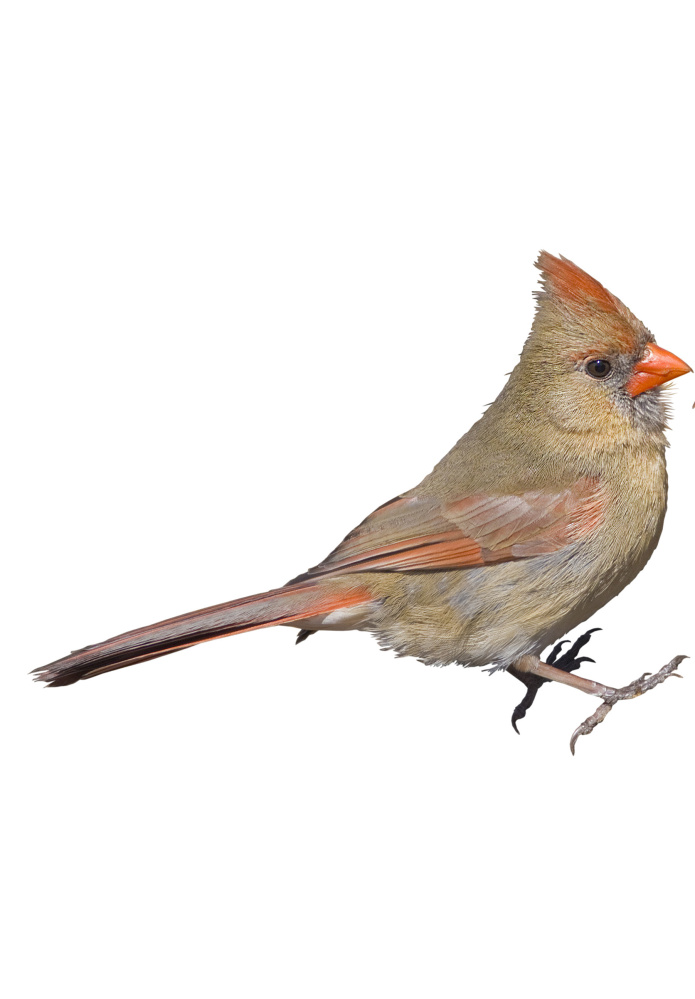Birds add a lot to a garden. They bring color, movement and – excepting crows and a few others – a pleasant soundtrack for you to enjoy while doing garden chores or, if you have time, simply enjoying the view.
People thrill at seeing the first robin of spring, the darting red of cardinals and the yellow of warblers and goldfinches. Catching sight of a hummingbird hovering around the bee balm is always a delight.
So how do you attract more birds to your garden? It’s a two-step process, according to Eric Topper, education director for the Maine Audubon Society in Falmouth.
The first, short-term step is to feed the birds.
“In June when birds are moving around, you want to have multiple feeders with some diversity,” Topper said. “You always have black oil sunflower seeds and suet, but this is the time to add hummingbird feeders and fruit to the menu.”
An advantage of the feeders is that, by placing them close to the house, you can get a good view of the birds as they come to eat.
While free food will get birds to show some interest in your garden, you have to do more to get them to stick around. That means insects.
“When we get into summer, they are thinking not only about their own diet but the diet of their chicks,” Topper said. “When they are settling down, your yard and neighboring yards have to have enough caterpillars and other insects.”
Because while adult birds eat quite a bit of fruit, seeds and suet, they eat even more insects – and the babies eat almost nothing but insects.
And not just any insects. Birds want to eat the insects with which they have evolved. The caterpillar stages of moths have to be available the same time that chicks are born, providing food for these hungry babies.
These native plants, birds and animals have all evolved together and depend on each other.
“The long-term recommendation is that as people are preparing to plant in their yard, they should always ask for native species,” Topper said.
Native plants feed birds both directly and indirectly. Directly by providing fruit and seeds that birds are accustomed to eating and indirectly by providing homes to the insects that the birds can eat.
As an example, an oak tree that will grow 75 feet tall will be home to more than 500 different kinds caterpillars and other insects.
“It is all part of a food web that is lost when we start clearing out areas and replacing the plants with European grasses and shrubs that come from the Midwest or southern United States,” Topper said.
In addition to providing homes for the insects that birds like to eat, the native trees and shrubs provide shelter and a place for birds to build their nests.
When a suburban development is all lawns and non-native perennials and shrubs, it is like a wasteland to native birds.
In addition to oaks, plants that birds like include several types of maples and ashes, pines, junipers and hemlocks, according to the Birdzilla website. Good shrubs include serviceberry, several viburnums, blueberries, pussy willows, chokeberry, American hazelnut and native dogwoods. Perennials good for birds include asters, Joe Pye weed, milkweed and jack in the pulpit.
Another assist in attracting birds is to leave a part of your property a bit messy. If you don’t rake up all of the leaves and twigs from the yard, birds will have material for their nests.
Another requirement is water. Bird baths are of some help, but birds prefer moving water – so consider adding a bubbler to the bird bath.
Topper noted that the interrelationship between birds, insects and native plants was put forth by Douglas Tallamy in his 2007 book “Bringing Nature Home: How Native Plants Sustain Wildlife in Our Gardens.” Tallamy will be making a swing through Maine, including a stop at Maine Audubon, later this month.
My wife Nancy and I have never purposely tried to attract birds to our yard – dating back to the days when we had seven cats who freely roamed our gardens. We have no bird feeders, although we do have two bird baths and a small garden pond, mostly because we like the looks of them.
But we do have lots of birds – cardinals, robins, warblers, chickadees, orioles, the occasional hummingbird, others that I can’t put a name to – and the many crows that wake us up too early too many days with their raucous caw-cawing.
Maybe all these birds just like our collection of plants and the insects they harbor.
Tom Atwell has been writing the Maine Gardener column since 2004. He is a freelance writer gardening in Cape Elizabeth and can be contacted at 767-2297 or at tomatwell@me.com.
Send questions/comments to the editors.



Comments are no longer available on this story